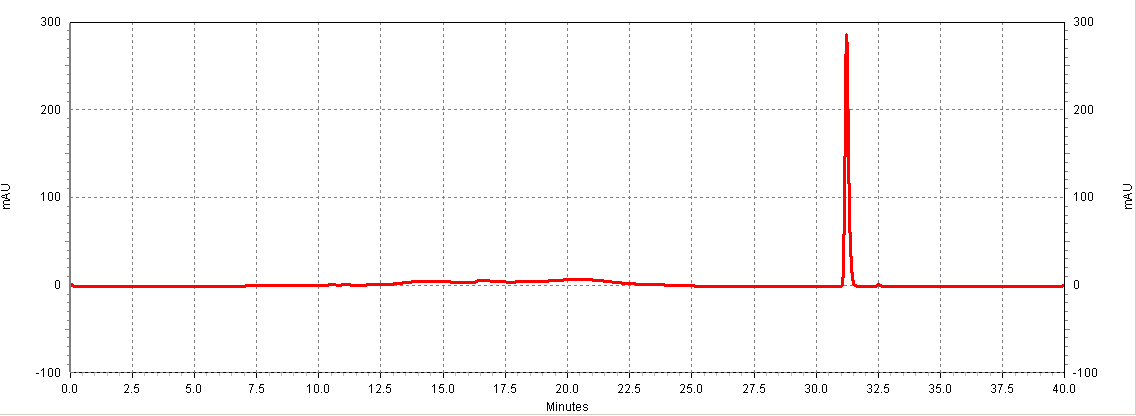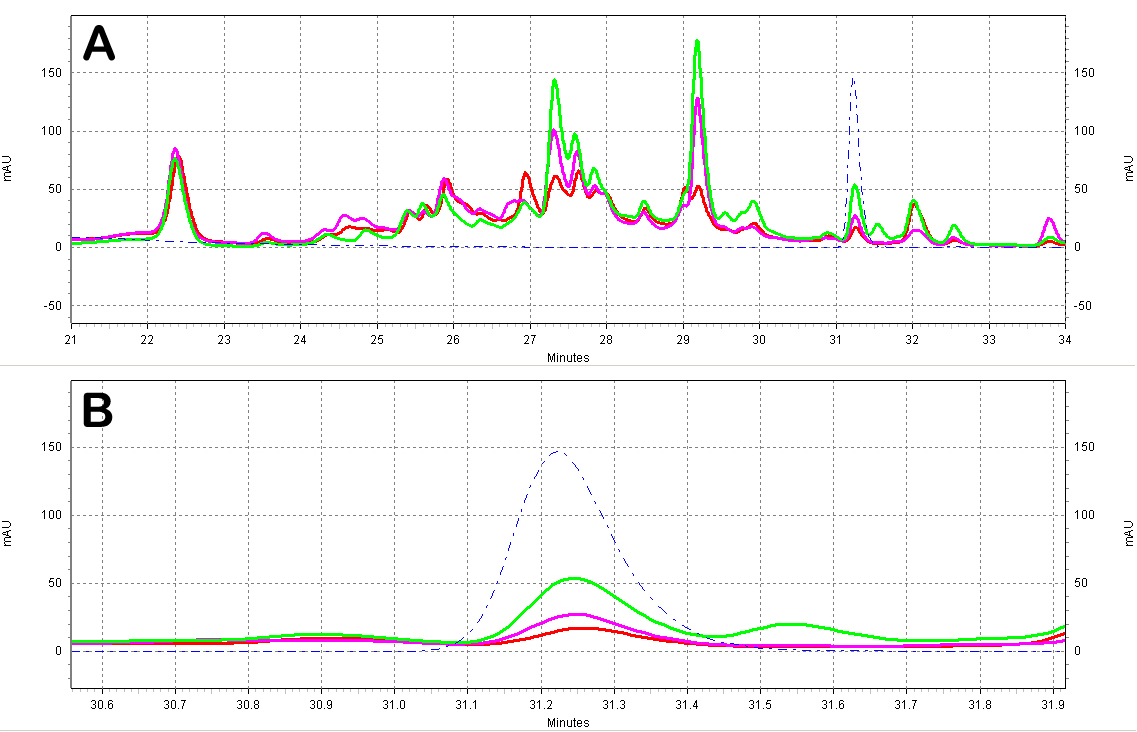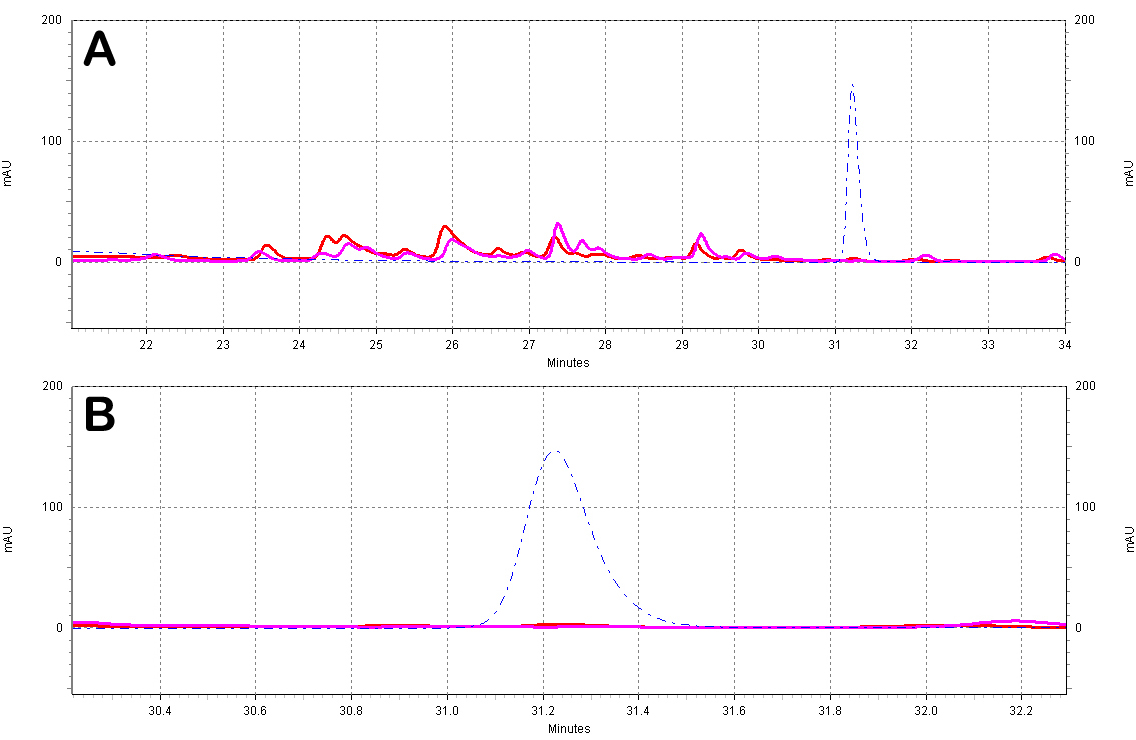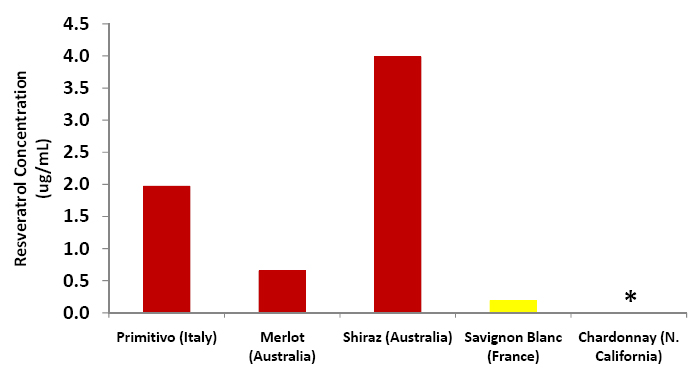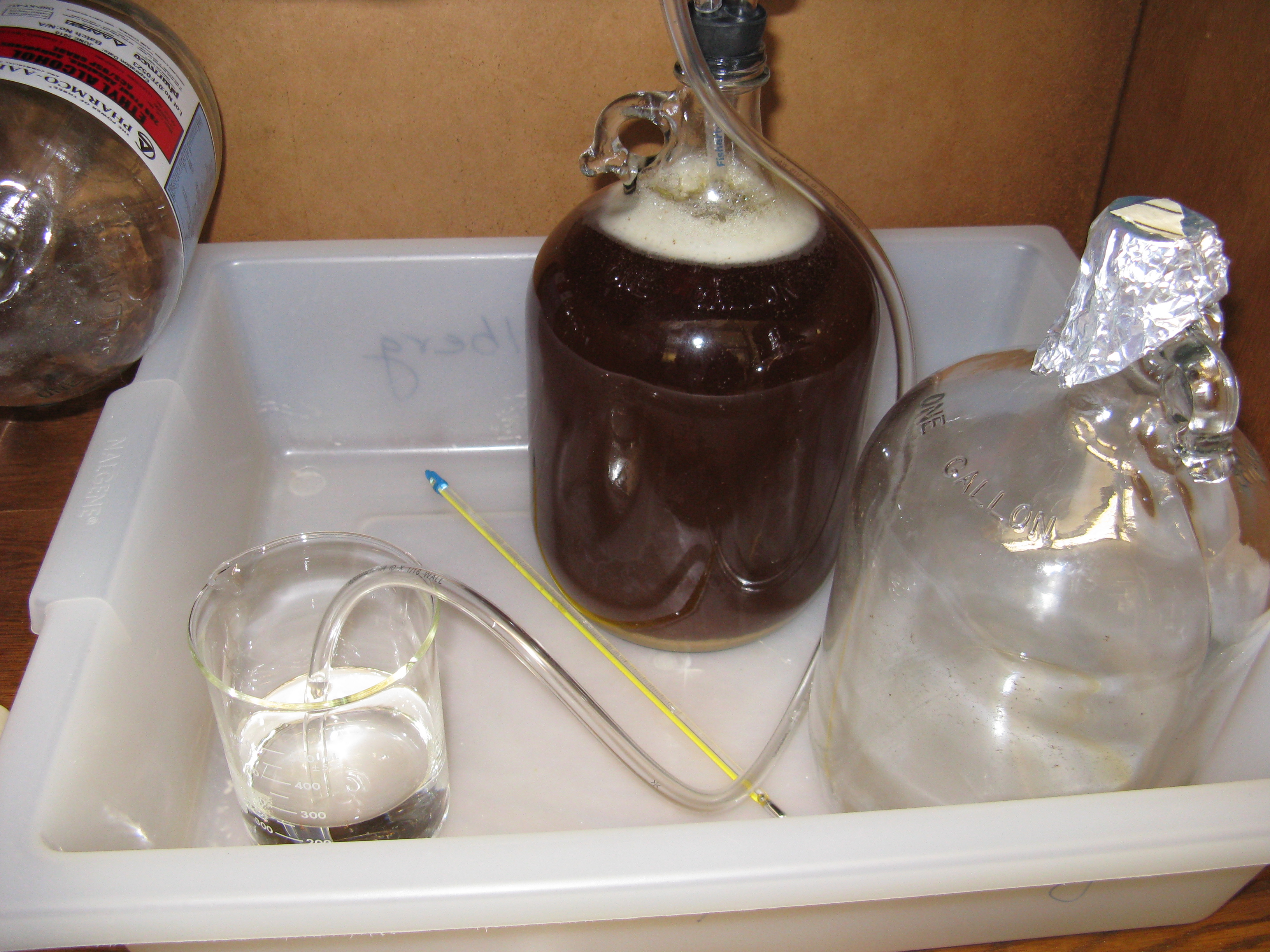Team:Rice University/RESULTS
From 2008.igem.org
(→C. HPLC Data) |
(→C. HPLC Data) |
||
| (17 intermediate revisions not shown) | |||
| Line 27: | Line 27: | ||
=== C. HPLC Data=== | === C. HPLC Data=== | ||
| - | To analyze our beer samples for resveratrol content, be will be using '''H'''igh '''P'''erformance '''L'''iquid '''C'''hromatography (HPLC), which will allow us to separate the metabolites produced by the yeast and analyze these compounds by spectrophotometry. By comparing HPLC chromatogram peaks of metabolites produced by our yeast with a resveratrol-only standard, we can identify if resveratrol is being produced, and at what quantities. We will be monitoring the production of resveratrol and the consumption of ''p''-coumaric acid, which will only be added to the media for the 4CL::STS-integrated yeast; the 4CL::STS+TAL will produce resveratrol | + | To analyze our beer samples for resveratrol content, be will be using '''H'''igh '''P'''erformance '''L'''iquid '''C'''hromatography (HPLC), which will allow us to separate the metabolites produced by the yeast and analyze these compounds by spectrophotometry. By comparing HPLC chromatogram peaks of metabolites produced by our yeast with a resveratrol-only standard, we can identify if resveratrol is being produced, and at what quantities. We will be monitoring the production of resveratrol and the consumption of ''p''-coumaric acid, which will only be added to the media for the 4CL::STS-integrated yeast; the 4CL::STS+TAL will produce resveratrol without the need for supplemented ''p''-coumaric acid (see [[Team:Rice_University/STRATEGY|STRATEGY]]). Below, we show our initial data for HPLC calibration curves using known quantities of ''trans''-resveratrol and ''p''-coumaric acid standards and test chromatograms using extracts from different wine samples. |
{|align="center" style="background-color:#FFFF99; text-align:left" border="1" cellpadding="0" width="50%" | {|align="center" style="background-color:#FFFF99; text-align:left" border="1" cellpadding="0" width="50%" | ||
| Line 42: | Line 42: | ||
::''Sample injection volume'': 25 microliters | ::''Sample injection volume'': 25 microliters | ||
|}<BR> | |}<BR> | ||
| - | [[Image:HPLC_RSV_example.jpg|center|thumb| | + | [[Image:HPLC_RSV_example.jpg|center|thumb|700px|'''Figure C1. Example HPLC chromatogram of a ''trans''-resveratrol standard.''']] |
<BR> | <BR> | ||
===== HPLC: Calibration Standards===== | ===== HPLC: Calibration Standards===== | ||
| - | [[Image:RSV_standards.jpg|center|thumb| | + | [[Image:RSV_standards.jpg|center|thumb|700px|'''Figure C2: ''trans''-resveratrol standards (Sigma).''' Different serial dilutions are shown: 20 ug/mL (red), 10ug/mL (purple), 5ug/mL (blue), 2.5ug/mL (green). The inset shows the calibration curve (Peak area vs. Concentration).]]<BR> |
| - | [[Image:Coumaric_standards.jpg|center|thumb| | + | [[Image:Coumaric_standards.jpg|center|thumb|700px|'''Figure C3: ''p''-coumaric acid standards (Sigma).''' Different serial dilutions are shown: 18.5ug/mL (red), 9.25ug/mL (purple), 4.63ug/mL (blue), 2.3ug/mL (green). The inset shows the calibration curve (Peak area vs. Concentration).]]<BR> |
| - | [[Image:RSVandCoumaric.jpg|center|thumb| | + | [[Image:RSVandCoumaric.jpg|center|thumb|700px|'''Figure C4: ''trans''-resveratrol and ''p''-coumaric acid have different retention times.''' This separation will allow us to resolve both molecules in a complex mixture, such as a yeast extract. Shown is 18.5ug/mL of ''p''-coumaric acid and 20ug/mL of ''trans''-resveratrol.]]<BR> |
===== HPLC: Wine Extract Tests===== | ===== HPLC: Wine Extract Tests===== | ||
| Line 55: | Line 55: | ||
:* The results clearly show that red wines (Fig. C5) contain ''trans''-resveratrol in significant amounts, whereas white wines (Fig. C6) do not, as expected. | :* The results clearly show that red wines (Fig. C5) contain ''trans''-resveratrol in significant amounts, whereas white wines (Fig. C6) do not, as expected. | ||
<BR> | <BR> | ||
| - | [[Image:Red_Wine_Samples.jpg|center|thumb| | + | [[Image:Red_Wine_Samples.jpg|center|thumb|700px|'''Figure C5: Red wine extracts analyzed by HPLC.''' A)Chromatogram of the red wine extracts; the different wines shown are a Merlot from ''Australia'' (red), a Shiraz from ''Australia'' (green), and a Primitivo from ''S. Italy'' (purple). Also shown is a ''trans''-resveratrol standard (10ug/mL, blue dotted line). B)Zoomed-in view of the resveratrol peak region.]] |
| + | <BR> | ||
| + | [[Image:White_Wine_Samples.jpg|center|thumb|700px|'''Figure C5: White wine extracts analyzed by HPLC.''' A)Chromatogram of the white wine extracts; the different wines shown are a Sauvignon Blanc from ''France'' (red) and a Chardonnay from ''N. California'' (purple). Also shown is a ''trans''-resveratrol standard (10ug/mL, blue dotted line). B)Zoomed-in view of the resveratrol peak region.]] | ||
| + | <BR> | ||
| + | [[Image:Wine_graph.jpg|center|thumb|500px|'''Figure C6: Resveratrol amounts as calculated using the above chromatograms and the calibration curve.''' Red wine samples are shown in red, white wine samples in yellow. The Chardonnay sample produced no detectable ''trans''-resveratrol peak.]] | ||
<BR> | <BR> | ||
| - | |||
<BR> | <BR> | ||
| - | |||
| - | |||
| + | ===== HPLC: ''beta''-Glucosidase treated samples===== | ||
| + | :*Some papers show that treatment of wine samples by ''beta''-glucosidase increases the amount of resveratrol detected by converting glycosylated resveratrol (aka piceid) into its aglycone form. | ||
| + | :*Our experiments indicate a marginal increase in ''trans''-resveratrol detection by HPLC after treatment with 500U of beta-glucosidase (Fisher). Other wine varieties may contain a greater percentage of resveratrol in piceid form. | ||
| + | <BR> | ||
| + | [[Image:glyco-RSV.jpg|center|thumb|700px|'''Figure C7. ''beta''-glucosidase treatment of wine samples.''' Shown is a Shiraz wine extract treated with ''beta''-glucosidase (purple) or untreated (red). Also shown is a ''trans''-resveratrol standard (10ug/mL, blue dotted line).]] | ||
| + | <BR><BR> | ||
===== HPLC: Fermenation batches===== | ===== HPLC: Fermenation batches===== | ||
Latest revision as of 05:22, 30 October 2008
|
|
 "
"



